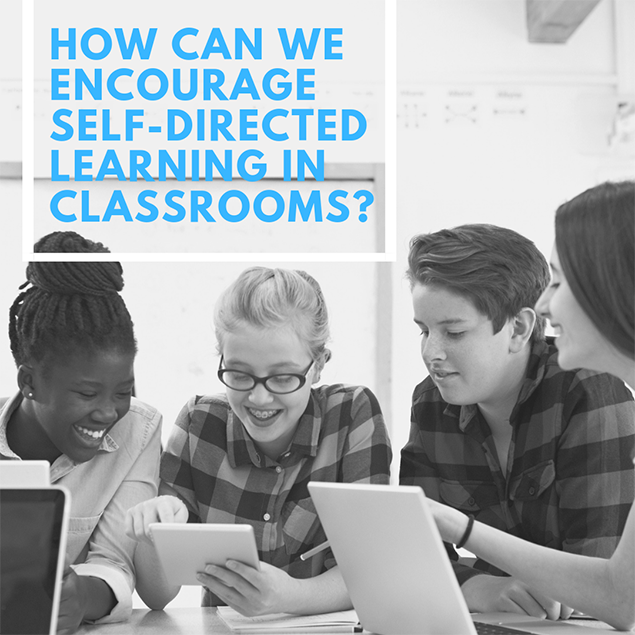Encouraging Self-Directed Learning in Classrooms
Posted by Network Support · Leave a Comment
Encouraging Self-Directed Learning in Classrooms
A teacher’s responsibility towards students is not limited to increasing academic proficiency. It extends to preparing college and career ready students. Teachers must help students develop knowledge and skills that lead to success in the real world. This includes developing effective communication, collaboration, and project-management skills, and encouraging students to engage in self-directed learning.
What is Self-Directed Learning?
Self-directed learning (SDL) is an active learning process in which students take the initiative to:
- Identify learning needs, areas of strengths and weaknesses.
- Formulate learning goals.
- Search for resources, and implement appropriate tools, strategies and techniques to assist with learning.
- Critically analyze, reflect and evaluate the effectiveness of strategies and attainment of goals.
Need for Self-Directed Learning
When students engage in self-directed learning, the learning paradigm shifts from a teacher-centric approach to a student-centric approach. It helps students to:
- Become more interested and invested in their learning processes.
- Become responsible and accountable for their decisions and actions with regard to their learning.
- Develop problem-solving and decision making skills and tackle situations with confidence.
- Independently transfer and apply theoretical knowledge to practical contexts.
- Actively participate and engage in activities such as guided reading, reflective writing and study groups.
As most colleges and organizations look out for these skills in their students or employees, students must be encouraged to pursue self-directed learning.
Encouraging Self-Directed Learning
Students can be considered self-directed learners when they demonstrate: active engagement, critical thinking, independent selection and implementation of learning paths in the classroom. Here are some ways by which teachers can guide students to discover their paths of self-learning and help them take ownership of their learning process:
Self-awareness:
The first step is to help students become aware of their:
- Study habits.
- Learning attitudes and behaviors.
- Areas of strengths and weaknesses.
There are three types of study patterns exhibited by students:
- Surface approach: In this approach, students merely learn to complete course objectives. They try to memorize and reproduce the content without acquiring a deeper understanding of it.
- Strategic approach: Students are organized and systemic in their learning behaviors, with the intention of achieving the highest possible grades.
- Deep approach: As the name suggests, students acquire a deeper understanding of the content, can apply knowledge to practical contexts and explain concepts using novel examples instead of textual examples. Students who are self-directed learners engage in deep approach to learning.
Creating self-awareness helps students to evaluate their study patterns and readiness to learn.
Learning environment:
Teachers can incorporate various active learning tasks based on interests of students to help them learn through observation, exploration, experimentation and discovery.
Power of choice:
Give students the freedom to choose their own:
- Learning activities.
- Methods of expressing learning.
- Learning tools and strategies.
Besides increasing students’ accountability for their choices, successful completion of chosen activities can instill students with a sense of accomplishment, which will further their efforts towards self-directed learning.
Develop skills:
Equip students with essential skills such as searching for resources, goal setting and time management skills to help students plan for and organize their learning schedules. Encourage students to create portfolios and to maintain journals to document their self-directed learning process and as a record of their progress and achievements.
Critical analysis:
Teachers must encourage students to critique their decisions and actions in learning. This enables students to:
- Determine the effectiveness of strategies and techniques implemented in learning.
- Identify the cause-effect relationship between their actions and their learning.
- Consider different points of view.
Like this article for teachers?
Browse the Professional Learning Board COURSE CATALOG to find related online courses for teachers in your state. Professional Learning Board is a leading provider of online professional development classes that teachers use to renew a teaching license or renew a teaching certificate.





